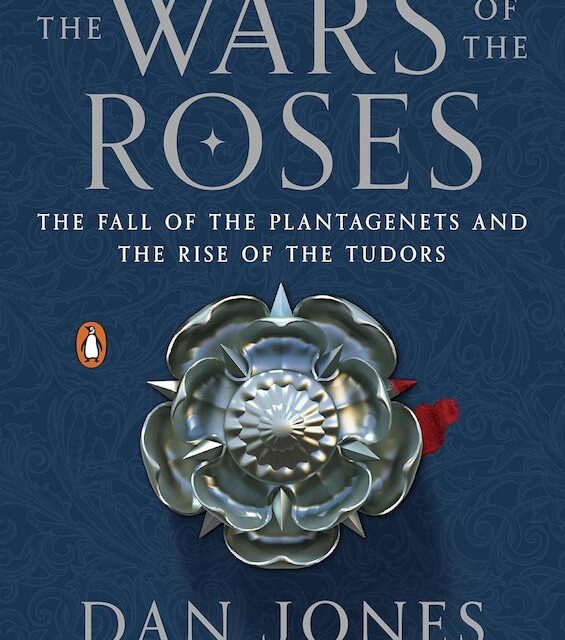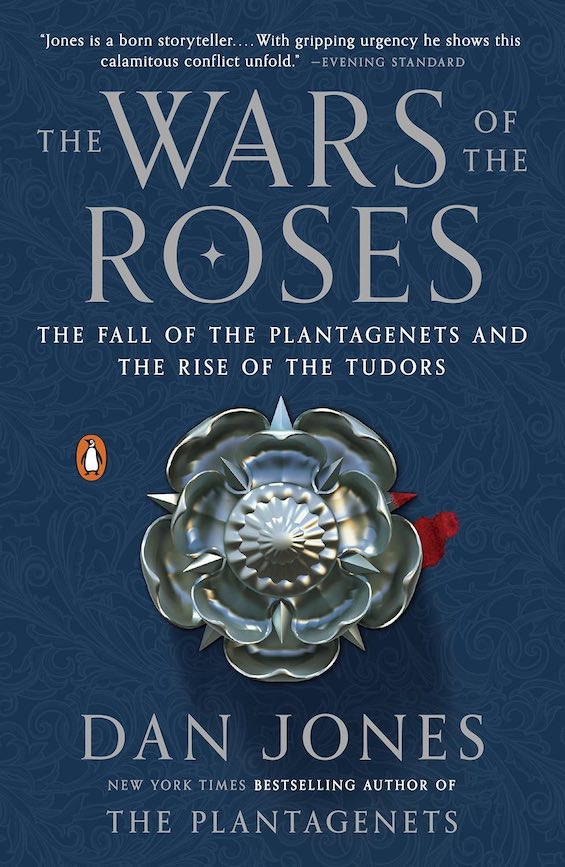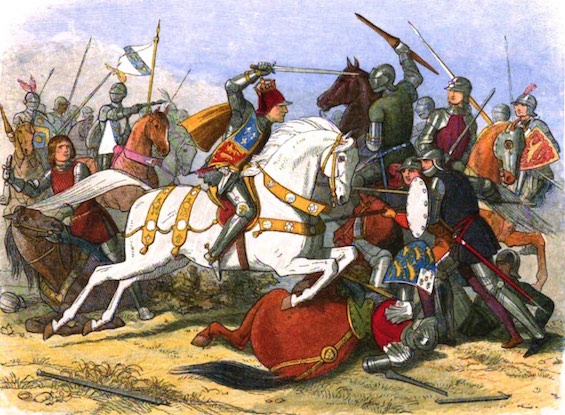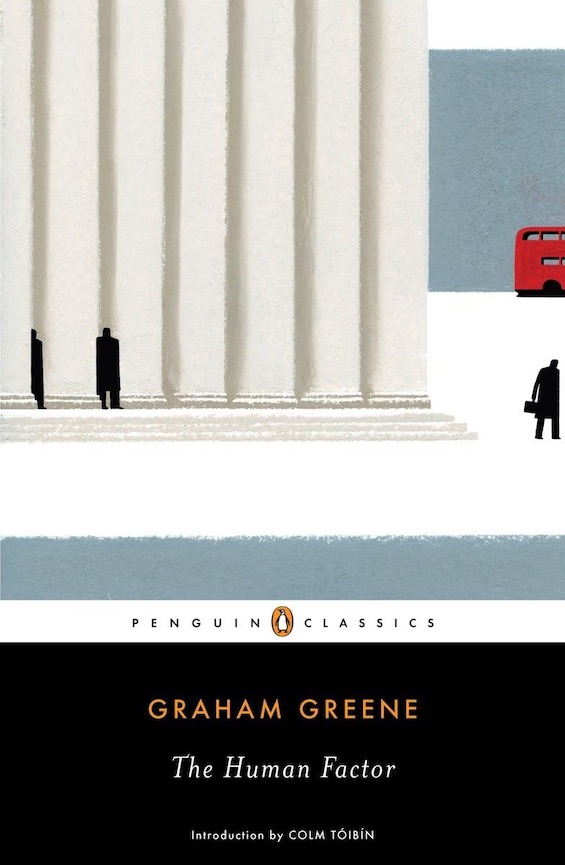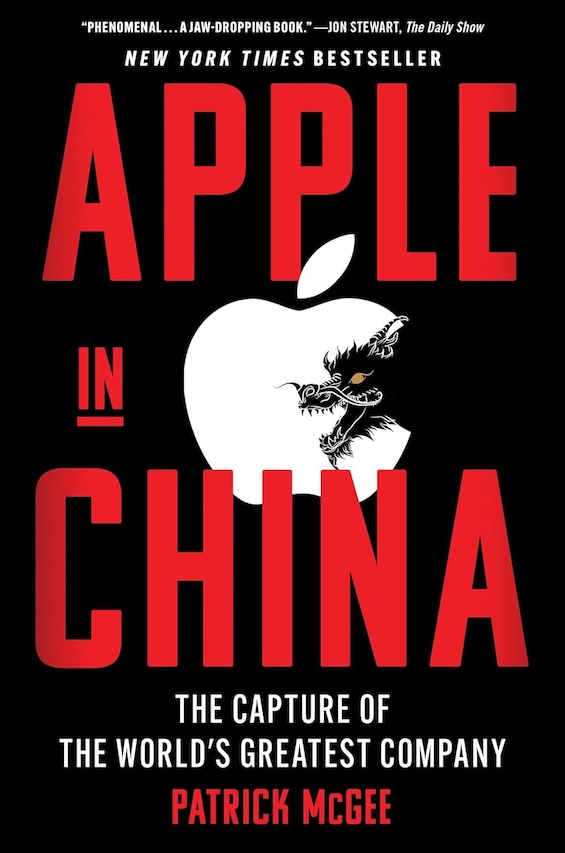Even if your knowledge of English history is sketchy at best, you’re likely to have heard of the Norman Conquest, the Black Death . . . and the Wars of the Roses. You may then be surprised to learn, as Dan Jones informs us in his account of that famous conflict, that the so-called “wars” were far from the simple clash of the Houses of York and Lancaster most historians describe. And the red and white roses that supposedly served as symbols of the warring parties were not prominent during much of the period. In his revisionist version of the story, that interpretation of The Wars of the Roses rose from the simplistic and self-serving propaganda of the Tudor kings who emerged triumphant from the melee.
A confusing and confounding time
In fact, the turbulent six-decade period from the death of King Henry V in 1422 to the accession of Henry VII in 1485 was not the dynastic struggle between Plantagenets and Tudors many historians insist. Rather, it was a time when many of the great families of England—the Nevilles, the Percys, the Woodvilles, and others, as well as the Plantagenets—vied with one another for supremacy in fast-shifting coalitions. They waged war not just on battlefields across the English and Welsh countryside but through alliances with foreign powers and negotiated marriages that blurred the lines of succession to the throne.
Jones’ deeply researched account in The Wars of the Roses portrays the time as one great protracted muddle. And few expected the nobleman Henry Tudor to emerge as king. To most, it was a surprise. For one thing, he was related only by marriage to his predecessor, King Henry V. He was Welsh, not a descendent of the French Plantagenets.
The Wars of the Roses: The Fall of the Plantagenets and the Rise of the Tudors by Dan Jones (2014) 418 pages ★★★★☆
The central cause of the civil war
The proximate cause of the turmoil that dominated the middle decades of the 15th century was the incompetence of Henry V’s son and heir, Henry VI (1421-71). He became king as an infant, leaving a succession of combative regents to rule the country. These kings-in-effect were his uncles, John, Duke of Bedford, and Humphrey, Duke of Gloucester, as well as Cardinal Henry Beaufort, another member of the sprawling Plantagenet clan. Beaufort and Gloucester could barely tolerate one another.
Only in 1537, when Henry reached the age of 16, was he deemed to be mature enough to rule in his own right. But that was a disaster. As Britannica puts it with a charitable spin, Henry “was a pious and studious recluse whose incapacity for government was one of the causes of the Wars of the Roses.” In fact, the young man was mentally unstable and prone to pathologically severe bouts of depression. Meanwhile, the lords of the land vied with one another for supremacy in the resulting power vacuum.
There is no better illustration of the principal flaw in the institution of monarchy: a country’s stability rests in the character and ability of the king.
Summary of the book by AI
Following is the summary I requested from the chatbot Claude (Sonnet 4.5). It’s entirely unchanged except that I’ve deleted a few URLs linking the text to its sources and inserted subheads. However, I’ve also inserted parenthetically the word “probably” to qualify Claude’s conclusion that Richard III had the “princes in the Tower” murdered.
The English crown changed hands violently seven times
Dan Jones’s The Wars of the Roses: The Fall of the Plantagenets and the Rise of the Tudors chronicles one of the most turbulent periods in English history, when the crown of England changed hands violently seven times during the fifteenth century. This comprehensive narrative follows the civil war between two branches of the Plantagenet dynasty—the Houses of York and Lancaster—as they fought to the death for the right to rule.
The conflict began with the weakness of King Henry VI, who proved ill-suited for medieval leadership after inheriting the throne as an infant following his father Henry V’s death in 1422. Henry VI was not an effective king, preferring education and helping people over waging wars. This leadership vacuum allowed ambitious aristocrats to vie for power, including Richard, Duke of York, who became a dangerous rival to the crown. Henry’s formidable wife, Queen Margaret of Anjou, attempted to protect her young son’s claim to the throne and led Lancastrian armies in battle, demonstrating how headstrong queens shaped this era.
A vivid account of unprecedented bloodshed
Jones vividly depicts the brutality of the conflict through detailed accounts of major battles. The battle of Towton saw 28,000 men die in a single morning, exemplifying the unprecedented bloodshed of these wars. The Lancastrians were eventually defeated and destroyed, while the Yorkist line took power under Edward IV, who ruled with vigor despite later family turmoil.
The narrative takes a darker turn with Edward’s younger brother, Richard, Duke of Gloucester, who [probably] had his brother’s two sons killed in the Tower of London and crowned himself Richard III in 1483. These “Princes in the Tower” became one of history’s most notorious unsolved mysteries, and Jones takes a firm stance on Richard’s guilt in their murders.
The humble Welsh origins of the Tudors
The Tudor connection emerges through an unexpected lineage. Henry V’s widow, Catherine of Valois, remarried a Welsh squire named Owen Tudor. Their grandson in exile, Henry Tudor, would emerge gloriously to defeat Richard III at Bosworth Field in 1485, becoming Henry VII and marrying Edward’s daughter Elizabeth of York to unite the warring houses.
Jones’s work serves as both a scholarly examination and an engaging narrative that challenges Tudor propaganda. It offers a long-overdue corrective to Tudor propaganda, dismantling their self-serving account of what they called the Wars of the Roses. The book brings together legendary figures including Joan of Arc, Richard III, and Margaret Beaufort, weaving their personal stories with the political machinations and military campaigns that defined the era.
Written as a follow-up to his bestselling The Plantagenets, Jones creates what critics have called probably the best introduction to the conflict currently available. His accessible yet authoritative style makes the complex web of betrayals, battles, and dynastic struggles comprehensible while maintaining scholarly rigor. The book ultimately reveals how the Plantagenet dynasty’s self-destruction paved the way for Tudor rule and shaped England’s future.
About the author
Over the years 2009 to 2025, the popular British historian and TV presenter Dan Jones has published a dozen nonfiction books and three novels. As an historian, he digs deeply into all the available records, many of them newly opened, to reexamine established interpretations of his country’s major historical events. The Wars of the Roses is a case in point, debunking as it does the well established trope of the 15th-century dynastic wars as a war between two warring sets of cousins.
Jones is Welsh, born in Reading, England, in 1981. He is a graduate in history of Pembroke College, Cambridge. He is also a journalist. His articles and commentries have appeared in nearly every major British newspaper and periodical in recent years.
For related reading
I’ve reviewed two other history books by Dan Jones:
- Powers and Thrones: A New History of the Middle Ages (Change in the Middle Ages came thick and fast)
- The Plantagenets: The Warrior Kings and Queens Who Made England (The many great stories of Britain’s bloodiest dynasty)
You might also enjoy The best novels about the Tudors. One of those novels casts additional light on a major episode in the reign of Henry VII, which Jones covers in less detail: The Pretender by Jo Harkin (A royal scam in 15th century England).
You may find other great sources of related information at:
- Good books about the Middle Ages
- 25 top nonfiction books about history
- 12 great biographies
- Top 10 nonfiction books about politics
And you can always find the most popular of my 2,400 reviews, and the most recent ones, on the Home Page.

